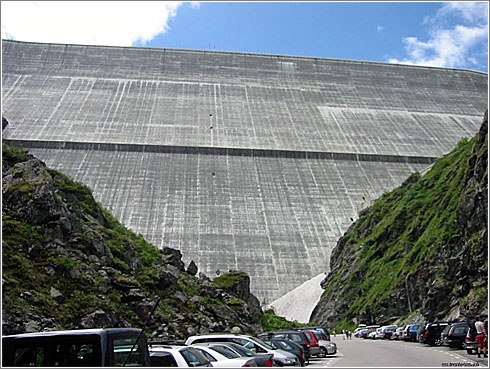
Kyrgyzstan, Tajikistan Disagree on CASA-1000
Publication: Eurasia Daily Monitor Volume: 9 Issue: 119
By:

Last month, energy ministers of Kyrgyzstan, Tajikistan, Afghanistan and Pakistan signed a protocol on the construction of power lines within the CASA-1000 (Central Asia-South Asia) project (www.tazabek.kg, May 23). If completed, CASA would allow Kyrgyzstan and Tajikistan to supply electricity to Pakistan through Afghanistan, becoming the first energy project that connects Central and South Asia.
Yet, some in Central Asia see the project as too risky and economically non-viable. Nikolay Kravtsov, a member of the Supervisory Board for Fuel and Energy Complex under the Ministry of Energy and Industry, is the most outspoken critic of CASA-1000 (www.24.kg, June 20). According to him, thanks to its rich hydropower resources, Tajikistan would be the primary benefactor from the project, while Kyrgyzstan would still be expected to invest up to $200 million for its implementation without much benefit to itself.
According to Kravtsov, since the CASA-1000 transmission lines originating from Kyrgyzstan then pass through Tajikistan’s territory, Dushanbe may refuse the transit of Kyrgyzstani electricity, instead preferring to sell only its own resources. Tajikistan’s current hydropower output is 48 percent higher than that in Kyrgyzstan, and “the Tajikistanis have openly said that they are ready to deliver to South Asia the entire volume of electricity without the participation of Kyrgyzstan,” Kravtsov said (www.24.kg, June 20).
Along with Kravtsov, some experts in Kyrgyzstan are also worried about instability in Afghanistan and Pakistan. Kravtsov is convinced that both Afghanistan and Pakistan expect year-round electricity supplies via CASA-1000 gridlines, but will not be able to guarantee the security of the project’s infrastructure. He argues that the price per kilowatt hour (kWh) will be affected by the high costs of security to protect gridlines in Afghanistan and the fact that Central Asian countries plan to export only during the summer months.
By contrast, Tajikistan welcomes the opportunity to expand into southern markets. Rashid Gulov, from the National Energy Company of Tajikistan “Barki Tojik” and a member of the CASA-1000 working group, believes that this project is attractive for both Tajikistan and Kyrgyzstan. “Electricity produced in Tajikistan is environmentally cleaner and two times cheaper than [power] produced in thermal power stations,” Gulov told Jamestown. According to “Barki Tojik,” Tajikistan’s hydropower production ranges from 3 billion kWh to 7 billion kWh each year, and Kyrgyzstan’s contribution to CASA-1000 would be inevitable.
Gulov is also more optimistic about post-2014 security in Afghanistan; if the CASA-1000 meets the expectations, it will likely be followed by other similar initiatives. “The Afghan government has guaranteed the security of the new power lines on its territory,” Gulov said about the May meeting between CASA participants.
CASA-1,000 would export Kyrgyzstan’s and Tajikistan’s excess electricity during summer months to Afghanistan and Pakistan. Kyrgyzstan and Tajikistan are expected to export a total of 4 billion kWh to Pakistan from roughly May to September. At the initial stage, the power capacity of CASA-1000 should reach 1,000 MW per year (hence the name of the project) through its 750-kilometer-long gridlines. The construction costs are estimated at $865 million (www.tazabek.kg, May 23).
The construction project is scheduled to begin next year, and the first supplies of electricity are planned to begin in 2016. The World Bank, Asian Development Bank and Islamic Development Bank have shown support for the project.
CASA-1000 has also been repeatedly mentioned by Deputy US Secretary of State for South and Central Asia Robert Blake as part of the United States’ “New Silk Road” vision, aimed at the creation of new trade routes through Afghanistan (see “Central Asia, Afghanistan and the New Silk Road Conference Report,” The Jamestown Foundation, November 14, 2011).
“All of the countries of the region and the United States see such projects as critical to helping build up a private sector and private sector opportunities, not only in Afghanistan but also in Kyrgyzstan,” Blake said during his visit to Bishkek in April. He further called on the Central Asian governments “to make sure that there is a very welcoming environment for foreign investment, that impediments such as corruption and bureaucratic controls and all other things that might inhibit foreign investment are removed” (https://bishkek.usembassy.gov/tr_040312_blakesinterviewtoptrc.html).
The difference between Kyrgyzstan’s and Tajikistan’s view of CASA-1000 highlights the distrust between both countries on issues of regional cooperation, as well as uncertainty over trans-Asian projects. In the past decade, both Bishkek and Dushanbe have sought to increase national energy independence from neighboring countries. These efforts were often marred by corruption among the top political officials who were the primary benefactors of growing energy production.




